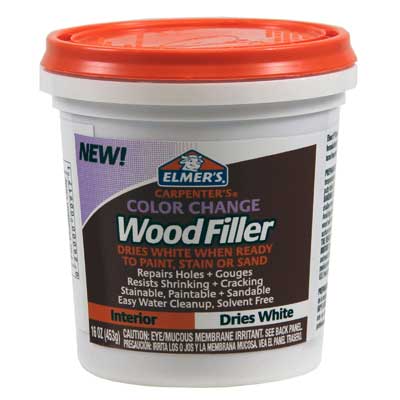
Dings, dents, chips, gouges and scratches: these are the enemies of every woodworker. They seek to drive us to distraction, and they can happen at any stage of a woodworking project.* These mistakes in our perfect projects make us crazy and are the primary reason for that bottle of Zantac on the shelf next to your chisels.
Elmer’s Products Inc. wants to help. The company has just introduced a new series of Carpenter’s Wood Fillers that might just save you from blowing a gasket next time you lose your grip and drop that smoother plane right on your nearly-finished coffee table.
The first thing you’ll notice about these fillers is they are not in cans. They’re are in toothpaste-like tubes, so you only need to pop the cap, squeeze out some filler and patch the error.
So we tested them out. Now, testing wood filler is not quite as much fun as firing up a 3 HP router and spreading sawdust for a square mile, so we had to try to make it fun. Elmer’s sent us some wood filler for red oak and for mahogany and our friends down in the shop let us borrow a couple of scraps of each for our experiment. We proceeded to steal the Marples chisel (featured in the current issue of Woodworker’s Journal) from the editor’s office and hacked into the wood with a vengeance.
Editor’s Note: it’s important to point out that no actual wood was harmed in the writing of this article. All the pieces of wood participating in this experiment were experienced stunt chunks.
With the wood properly “distressed,” we proceeded to fill in the wounds. There’s not much more to it than that. We waited for it to dry, sanded it, and ran some Danish oil over to see how well it blended with the wood it was supposed to match. In some cases, where the dings were small, the filler blended into the wood with no trouble.
But let’s face it, this IS wood filler. If you have a huge gouge in the wood, this is not going to make the mistake invisible. It’s doubtful that any filler could hide a really big gap in a project. But for the smaller dents and scratches, we were quite impressed with this filler’s ability to blend in and hide these minor catastrophes.
*Three Stooges Law of Woodworking: the likelihood of a mistake occurring is inversely proportional to the time left before the project is completed and delivered.
– Bob Filipczak







